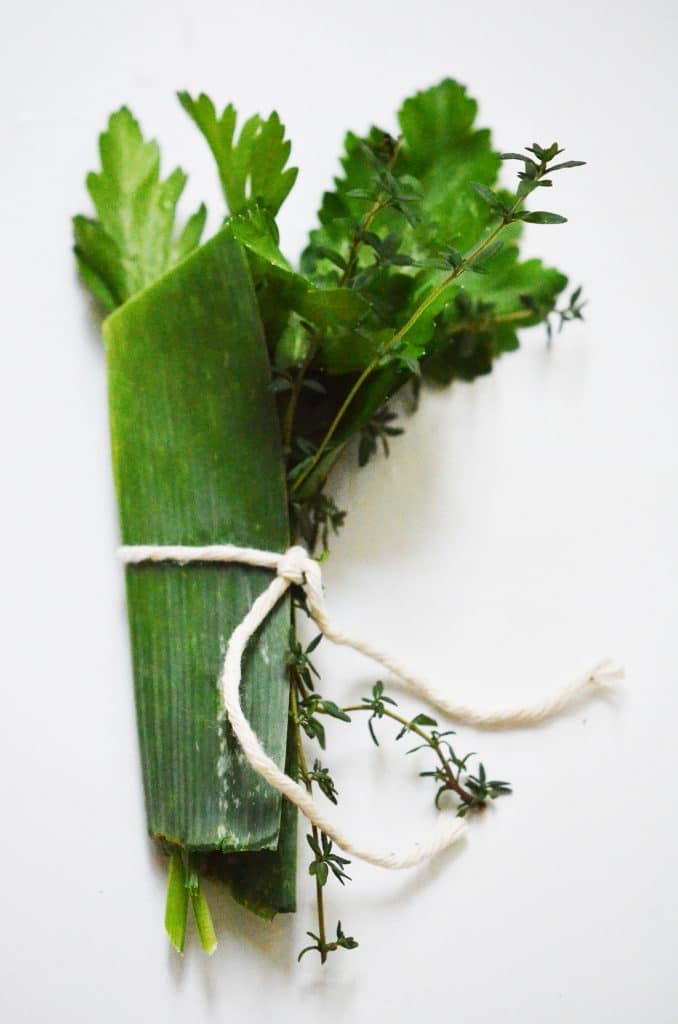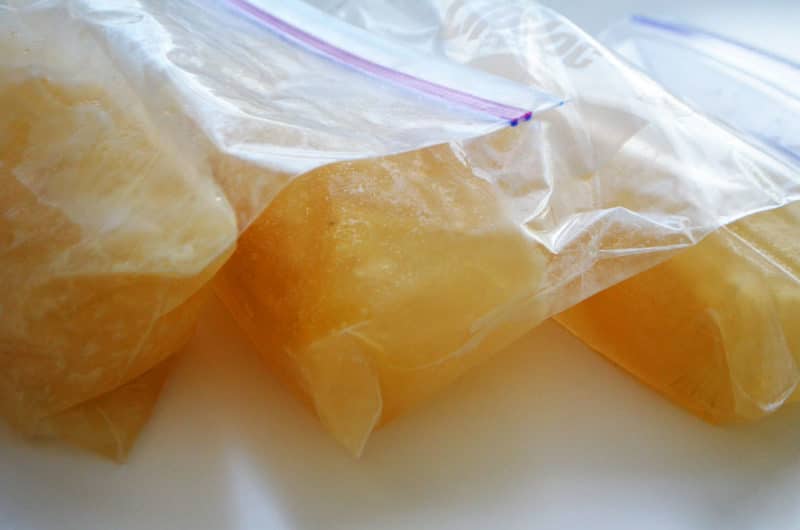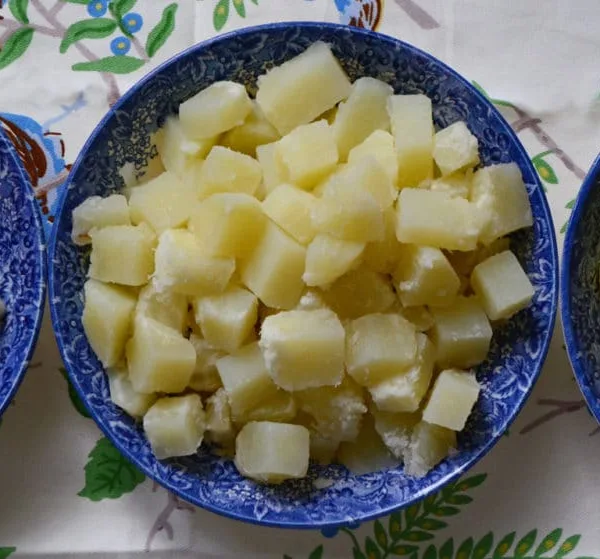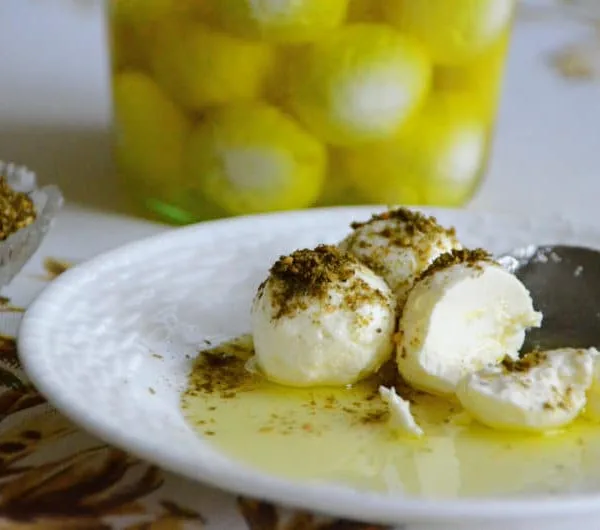How to make Chicken Stock
Jan 26, 2012, Updated Jan 09, 2023
This post may contain affiliate links. Please read our disclosure policy.

When I stepped through the doors of Tante Marie’s Cooking School to begin the full-time culinary program in the fall of 2010, I wasn’t sure what to expect. The first order of business was to suit up. That meant changing from street clothes into black and white checkered pants, white chef’s coat, white apron, and thick kitchen clogs. Mine are shiny green snakeskin, which Tante Marie dubbed “weird.” I think she would have preferred regulation black. Hair up and out of the way, in a rather unattractive tight bun.
Once all 16 of us were up to code, we were shown how to hold the chef’s knife with thumb and first finger on either side of the blade (as opposed to the handle). Then the chopping began, and the chopping continued until the knife felt like an appendage and each student’s skill was deemed passable through a series of nerve-wracking planned or impromptu chopping assessments.
We moved immediately from our lesson in chopping on day one for soup au pistou (vegetable soup, lots of chopping) to the foundation for all French cooking, the “fond de cuisine”: stocks. Because I had not made stocks before, and was discovering how indispensable they are to all manner of good cooking, I found them fascinating. It was with stocks that I employed one of the early edicts of Chef Frances in her instruction on how to become a good cook—through reading, practicing, and eating, one develops the ‘sense of taste’ that is essential to making good food. Read, practice, eat. No problem.
What is most surprising about stocks is that, when homemade, they contain no salt. They are made to be used as an ingredient in preparations like soups, sauces, and braises and it’s not until then that seasonings like salt come into play. Learning to ‘get’ the flavor of stock without salt was a great lesson in probing the bare essentials and understanding how the true nature of basic flavors (like chicken, carrots, onion, celery) play out when salt is not involved. I thought often of my Aunt Hilda when I was in school, and how she would greet me with a kiss and say, “you’re so delicious I could eat you without salt!” Not only did she, a fabulous Lebanese cook, understand the foundation of cuisine, but even more so the foundation of love. Not to mention charm.

Stocks can be made out of just about anything, and the ingredients are quite simple, but the fundamental idea is that your stock is only as good as your ingredients. Garbage in = garbage out. The same edict holds true when cooking with wine, in that only wine worth drinking should be used for cooking. The same edict seems apropos too as we’ve been resolving, all month, to do better at the start of a New Year (and hopefully beyond): garbage in = garbage out.
The essence of stock-making is the slow extraction of flavor from bones, vegetables, and herbs in water. There is actually plenty of controversy among chefs about the best route to exceptional stock, including whether or not to cut up the bones (which can make the stock murky) and what the ratio of water to bones to vegetables should be.
One of the many great things about living here in Harbor Springs is the availability of good ingredients. I like to make my chicken stock from the ultra-clean Flemings Feirms chicken and organic mire poix (the ‘holy trinity’ of French cuisine—celery, carrots, and onions). I even found local, organic winter carrots recently at Toski Sands that, once in my fridge, lasted a good long time. Chicken stock can be light or “white,” using raw chicken, or dark, using the bones of a roasted chicken. The latter is my personal preference because of the added depth of flavor roasted bones give to the stock, plus the double pleasure of making use of the carcass after enjoying a roast chicken. It’s the kind of cooking that takes into account letting little go to waste, the kind of cooking one of my grandmothers, who grew up on a depression-era farm, used to talk about a lot.
It may seem above and beyond the call of duty to make stock when there is no denying the expedience of purchased broth. But let’s put the call of duty aside for a moment and consider one of these snowy afternoons an opportunity to don an apron (we’ll skip the checkered pants), and put the pot to simmer on the stove for a few hours. The house will be filled with a calming aroma to sustain through 2012 feeling delicious, even without salt.
This essay was printed earlier this month for my column, Main Street Kitchen, in our local Harbor Light newspaper.

Chicken Stock
Store the stock in the freezer in zip-lock bags, ready to make soup, rice and other grains, and sauces that much more delicious. A cup for the chef when the stock is done, with a dash of salt, is a good way to end up a day of stock-making. If the stock is from a roasted chicken, much of the meat will have been eaten, which is fine. If making from raw chicken, the meat after cooking for several hours is typically spent, and discarded. Use up any extra herbs for the bouquet garni (which can be tied up with kitchen string tucked into a piece of dark green leek, for easy removal) by making several at once and freezing them in a bag for use in stocks, soups and stews.
1 4-5 pound chicken, either roasted or raw
3 onions, peeled and quartered
3 carrots, peeled and cut into 1” pieces
2 celery stalks, trimmed and cut into 1” pieces
bouquet garni (1 sprig parsley, 1 spring thyme, 1 bay leaf)
Remove excess fat from the bones and the chicken. If using a roasted chicken, remove any seasoned skin. Cut the chicken into pieces if needed to allow them to fit easily into the stock pot.
Place chicken in a large pot with enough cold water to cover the bones by about 2 inches. Heat to boiling over medium-high heat, skimming the surface to remove scum. Do not let the stock boil for more than a few seconds; boiling makes the stock cloudy. Turn down the heat to low immediately.
Add vegetables and bouquet garni, and stir to combine. The vegetables and chicken will float and stick out at the top, which is not a problem. Simmer gently over low heat with slow bubbles forming for 4 hours. Skim the top every so often, adding about ½ cup of cold water every hour as the stock evaporates.
Strain the stock through a colander into a large bowl or container. Cool completely in an ice bath. Refrigerate in airtight containers for up to five days, or freeze in 1-2 cup portions.











Stocks really are a beautiful thing:)))) Love this one Maureen:) LOVE THEM ALL! Keep em comin!!!! XO
Thank you Rini!
So it seems you’re not the only one talking stocks this week…
https://www.suntimes.com/lifestyles/10066424-423/at-the-chefs-table-it-all-starts-with-stock.html
No disrespect to this writer, but I enjoyed your piece so much more…
Sofia
Chicago Trib also had a ditty about stock, by the great Bill Daley. Stock on the brain all over the place…. Thanks for the good words and the link, Sofia!!
As much as I like french chicken stock, my favorite is middle eastern stock consisting of raw chicken, water, an onion, mastic pods, cardamon pods, Laurier leaves, pepper corn and some salt. The smell of the stock is divine. Lately I have learned to make the Chinese chicken stock which is also becoming a favorites. It is so simple. You just add to the water and chicken some raw ginger, some diced onions, some lime leaves and voila. So easy and so so good.
Have a great week-end.
Middle Eastern stock and Chinese stock…both sound aromatic and wonderful! Can’t wait to try them, thank you Karine!